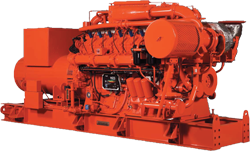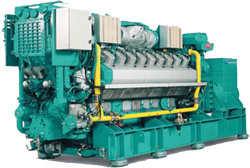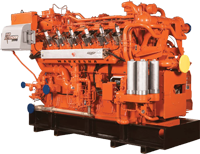 |
 |
Select Language
|
|
Combined Heat and Power, CHP
Traditionally, electricity has been produced by power plants that burn fuel to drive electric generators. These power plants create a large amount of heat wasted in the process of producing electricity. This unused energy may equal up to 67% of the energy content of the fuel in a typical power plant.
 |
In the past, industries that needed large amounts of steam heat in their manufacturing processes such as pulp and paper mills, petroleum producers and food processors had two choices. They could make steam on-site burning fuel in a boiler and provide their electricity needs separately through the local utility. This has been called separate heat and power. Or they could generate electricity on-site and use the waste heat from that process to create steam. Providing both electric power and heat from a single source is called combined heat and power (CHP), also known as cogeneration. While separate heat and power systems are often only 33% efficient (67% of the fuel energy is wasted), CHP can be 60% to 80% efficient by capturing and making productive use of the waste heat on-site.
 |
There are many valuable uses for waste heat. Food processors need steam to can fruits and vegetables; dairy industries need steam and hot water to pasteurize milk; commercial laundries use hot water for washing; health clubs heat water for swimming pools, showers, whirlpools and saunas. CHP can also serve facilities that need cooling or refrigeration by using the heat to drive heat absorption chiller and refrigeration technologies.
CHP Benefits
Benefits for Energy End-Users:
- Energy Savings: When electricity is generated in large central power plants located far from consumers, about two-thirds of the energy in the fuel is lost; by using smaller onsite CHP generators, waste heat can be used to cool building space and/or provide domestic hot water and energy cost will drop significantly.
- Power Reliability and Quality: CHP can increase the reliability and quality of a company's computing, manufacturing, processing and research functions.
- Independence from grid power: Energy user can produce electricity disconnected to the grid. It could be a big deal in villages or regions far from grid power.
- Fuel Choice: CHP systems can combust propane, fuel oil, hydrogen, landfill or anaerobic digester gas, providing a hedge against rising natural gas costs.
Benefits for Society:
- Reduction in losses: On-site power systems such as CHP take pressure off transmission systems and reduce line losses related to the long distance delivery of electricity.
- Fewer Blackouts: Onsite power/thermal systems provide backup in case of emergencies and blackouts.
- Improved Power Grid: Onsite CHP can improve the electric grid's power quality, efficiency, and reliability.
- Fast Response to Load Growth: By using off-the-shelf technologies, implementation of CHP is often the quickest method to respond to needs for more capacity.Implementation of centralized power plants may take 5-10 years.
- Cleaner Air: Emissions of carbon dioxide and air pollutants like, sulphur dioxide, and volatile organic particles can be substantially reduced with CHP. Policy makers have recognized that CHP can meet the power and steam needs of industry while burning 35% to 40% less fossil fuel, thus there is a significant reduction in emissions of green house gases that contribute to global warming.
- Enhanced Energy Security: Because CHP is dispersed across large areas, these onsite systems are far less vulnerable to intentional and accidental disruption than centralized power plants.
Products and Services
 We can do Design, Construction, Assembling, Installation, Commissioning and Start-up of the plants as follows: We can do Design, Construction, Assembling, Installation, Commissioning and Start-up of the plants as follows:
- Power plants with gas engine generators
- Canopy CHP power plants; No need to building. Mobile, flexible, immediately operative
- Stationary CHP power plants
- Emergency power plants with diesel engine generators
|
|
 |

|
|
|
| © 2010 Avin Palayesh Niroo Co. - Designed by A&M Bonakdar |